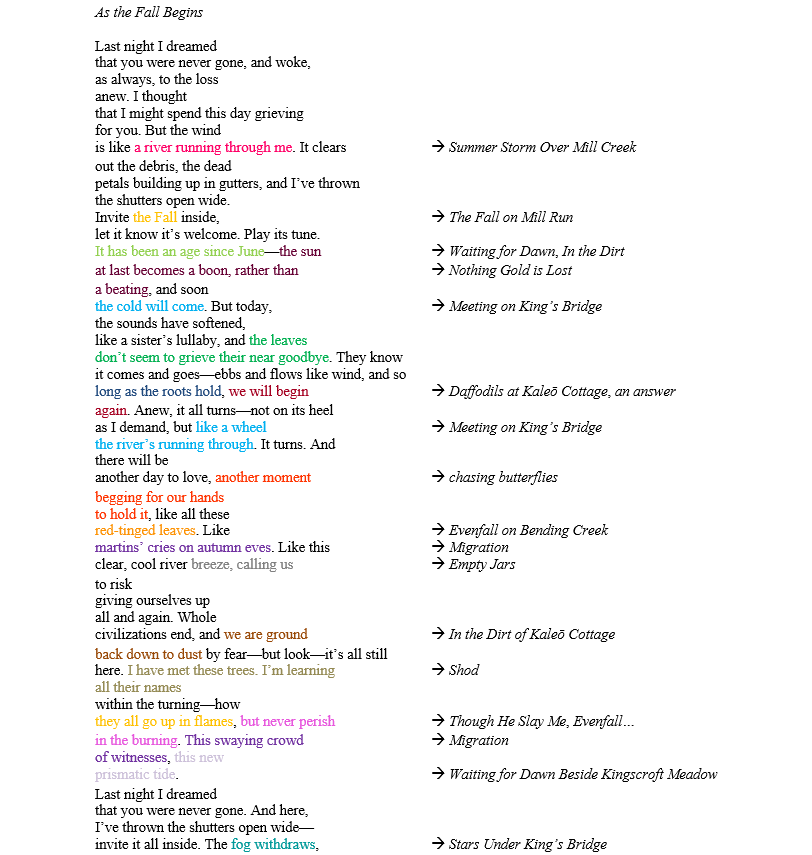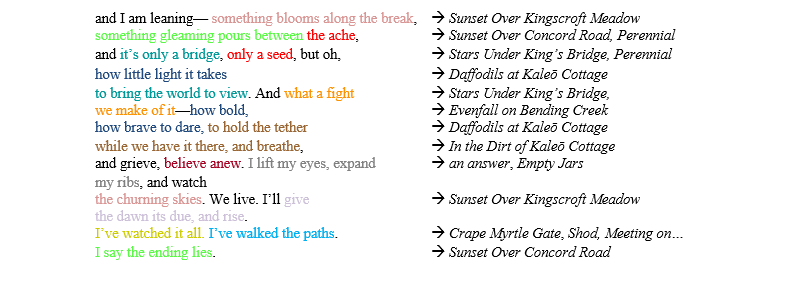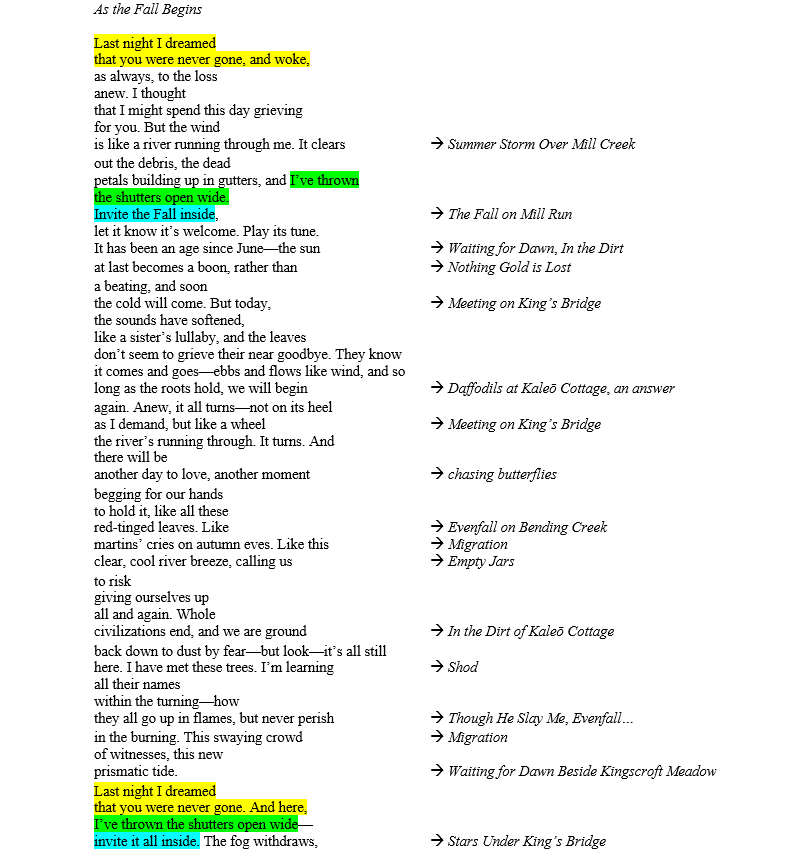Analyzing "As the Fall Begins"
A practice in reflection and allusion.
With the completion of my collection Turning Earth, I’ve been eager to share a bit about the techniques behind the work! I love talking poetry technique, so I hope you’ll join me in the joy. I’m particularly excited to talk about the culminating piece “As the Fall Begins,” since I’m especially proud of it.
The title of Turning Earth is meant to work on multiple levels, referencing the actual orbiting of the earth—its cyclical/seasonal nature—but also the act of tilling the earth, turning over the top layer of soil in a garden, breaking it up and adding air to the soil in order to plant seeds, allowing roots to more easily move through. That image of freshly-dug earth is also meant to evoke the idea of digging (or digging up) a grave.
As we read through the collection, we find these two themes echoed throughout each poem—cycles and seasons, death and rebirth, the turning of the wheel we all share. It follows, then, that the final poem of the collection would not end the work so much as turn it—as though on the downward arc of the wheel, letting gravity do the work, sending the reader back into the next climb with the momentum of the fall.
“I didn’t set out with an end in mind, so I suppose it’s fitting that I didn’t find one.”
- Shigé Clark
So, “As the Fall Begins” calls the reader back to the rest of the collection, referencing the many poems that have preceded it, carrying them within itself, culminating them, and (hopefully) turning the reader back to experience them again with fresh eyes:
The culminating piece doesn’t only return us to the previous poems, though. It also turns in on itself, a wheel within a wheel. Yet, we don’t return unchanged to where we started the turn, either in the book or in the final poem. We start with a dream, a wish, a reference to a moment we’ve already left behind. In the reflection, though, we come back to the present moment, the only one we really have. In both cases, we reference the shutters, opening up, being willing to let in the reality of what’s around us, more able and willing to face it after our journey here.
It’s only in the second turn, though, that we accept everything that comes in. Even in the space of this small turn, we’ve learned, drawing on our experiences and observations throughout the year to reflect on the moment and come back to it with renewed openness and hope. And when we do that, the fog withdraws—as it did in a moment of reflection on the King’s Bridge—offering clarity that leads to a point that completely re-paints the beginning of the poem, along with (if the reader allows) the rest of the collection.
I love the turning of this piece, as I love the turning of the collection. And after over a year of working on this poem, I was proud of how much I was able to pack into it. I didn’t approach it intending it to be the culmination it became—at the time, it was just another poem, written in the final month of a year spent in purposeful observation and appreciation for the little, beautiful Place I’ve been given. It was through the writing of the collection that I discovered its themes, and it was through the writing of this poem that I found its culmination. I didn’t set out with an end in mind, so I suppose it’s fitting that I didn’t find one.
What a marvelous, surprising process writing is. The only intent with which I set out was to cherish and honor my local place, and though I hoped to learn something along the way, I’ll be honest with you dear reader—I didn’t expect to. More the fool me. I can hardly look at the birds of the air or the flowers of the field without my Maker teaching me something, perhaps I ought to have known.
To the next turn, then, and taking our lessons with us.
(Cover image by Deborah Hudson at Pixabay)




